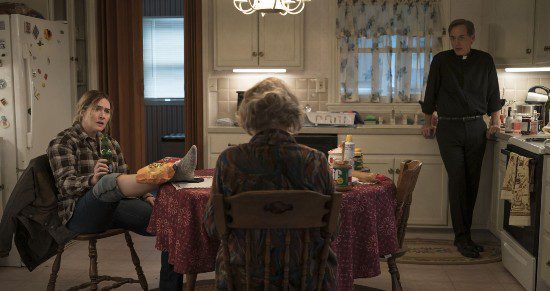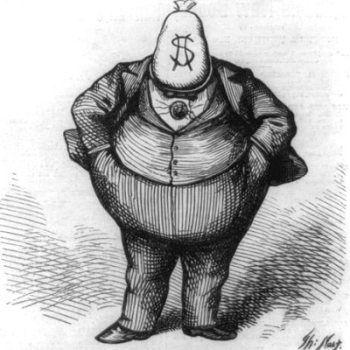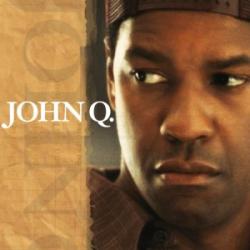• David Brooks goes back for a second helping at the Applebee’s salad bar, revisiting his Bobos in Paradise thesis in an essay for the Atlantic. Paul Campos responds appropriately.
The theme here — one Brooks has sounded for years in various forms — is that our ills in America all derive from the condescension of liberal elitists. These are the wealthy-yet-artsy “Bohemian bourgeois” he frequently mocks as out of touch with the common folk of real America because, for example, they’ve never even eaten at the Applebee’s salad bar.

Yes, he really said that. And no, Applebee’s doesn’t have a salad bar. And yes that choice of detail intended to prove how hopelessly out-of-touch those liberal elitists are therefore proved, instead, that it was Brooks himself who was out of touch.
Brooks has a knack for this. See also his 2017 column attempting to make capicola ham sound like some newly introduced, mysterious, elitist, exotic ingredient that sneering liberals consumed in order to humiliate honest, salt-of-the-earth MAGA-folk. Capicola, he said, was a perfect example of the kind of elitist “cultural barriers” that these snobby Bobos had erected to exclude and immiserate the good people of real America.
Brooks went to high school with some relatives of mine and, like them, sometimes ate Italian hoagies from John’s (a terrific sandwich shop a short walk from both where they went to high school and I went to college). And he also almost certainly ate an Italian hoagie or two from that famously elitist, exclusive restaurant called “Wawa,” which has been serving capicola ever since before Brooks himself was a sallow-eyed teenager.
The type — or stereotype — Brooks describes as a “Bobo” might vaguely apply to some real set of people who may or may not have a measure of the cultural influence he ascribes to them. But every time Brooks sets out to describe them, imagining that he’s describing, say, Guy Pearce’s character in Mare of Easttown, Brooks winds up describing this category in a way that makes everyone else in Easttown a “Bobo” too — Mare and Helen and Lori and Beth and Freddie and Fr. Dan and all the rest.
The LA Times did an entertaining entertainment piece on Mare of Easttown in which they sought to interview the actual “mayor of Easttown.” This led to an amusing discussion of very small town politics with the chair of the board of supervisors from Easttown Township, which doesn’t have a mayor. That was fun, but beside the point in a completely Brooksian way, since the HBO series wasn’t set in Berwyn — the Very Mainline center of the “real Easttown.” It was, rather, set in a fictional southwest Delco town vaguely based on, I think, Aston (eASTtOwN) — a place that’s geographically and economically very far from the old money of the Mainline. (To his credit, the guy from Berwyn tried to set the Times writer straight on Pennsylvania’s admittedly confusing boroughs vs. townships distinctions, but the writer was already committed to the bit and unwilling to hang up and try again with the mayor of Aston.)
That LA Times piece, in other words, was premised on a mistake. It was the kind of mistake — like confusing Haverford and Havertown — that’s understandable from people who aren’t from around here. But that’s the point: David Brooks is from around here. And yet he still keeps getting confused about the difference between Haverford and Havertown, or the difference between St. David’s and Garrett Hill.
And Brooks does so in a way that’s not just sloppy, but seems to be dishonest — which is what the “sallow-eyed teenager” reference there is about. That’s from my reaction to his massively misleading description of my former roommate’s coffee shop in his Bobos book, which accompanied his weirdly inaccurate description of a “new” bookstore that was, in fact, a place his own parents had frequented for decades.
Again, this doesn’t mean that every aspect of Brooks’ strained argument about cultural elitism is as wholly dubious as his multiple failed attempts to illustrate that argument with examples. One could argue, I suppose, that discussing a “prestige-TV” miniseries from subscription cable as though it were as widely understood as Happy Days was back in the late ’70s might be whipped up into another potential example of cultural elitism and cultural barriers erected by over-educated “Bohemians” against which blue-collar working-class common folk were reasonably rebelling by embracing the racialized politics of white resentment. We could lean heavily on the slogan “It’s not TV. It’s HBO” and use that as an illustration of some vast gulf between the intellectual liberal snobs who watch HBO and the populist majority of real Americans who instead watch The Masked Singer.
But to do that, we’d have to obtusely pretend that HBO was somehow the cultural equivalent of a reserved box at the Met and not also the streaming service lots of real Americans use to binge watch Friends or Zack Snyder’s latest recuts of Justice League. And it would be very hard to do all of that without ourselves embracing the same condescending snobbery that Brooks is trying to denounce, without sounding very much like we were suggesting that Mare of Easttown or The Sopranos was somehow beyond the grasp of those culturally backward normies who wanted and deserved only fare like Full House and American Idol.
Brooks’ weird denunciations of “Bobos” are hard for me to swallow not just because of the local angle of so many of his examples, and which thus only prove that he don’t know Delco. They’re also hard for me to swallow personally because I am, personally, just the kind of over-educated liberal he imagines he’s describing. And he’s right about one thing: I don’t eat at Applebee’s. But that’s because I can’t afford to, not with what I make driving a forklift to unload trucks of mulch for the gardens of Easttown.
• At the Smithsonian, Abigail Eisenstadt writes about “The True Story Behind How Pearls Are Made.” The science here is not new or flashy or controversial, but it may still pose a big hurdle for our friends who seek to be “Bible-prophecy scholars.” Because the basic science of “How Pearls Are Made” has some horrifying implications for their insistence that we Christians must interpret every word in the book of Revelation “literally.”
Eisenstadt enlists a pair of scientists to outline the basics of pearls:
“Pearl is a word we use for a shiny creation that a mollusk produces. If debris gets stuck in a mollusk and they can’t flush it out, they coat this debris in their own mother of pearl or shell material,” said Gabriela Farfan, environmental mineralogist and Coralyn W. Whitney curator of gems and minerals at the Smithsonian’s National Museum of Natural History.
While all mollusks, including oysters, mussels, and clams can technically make pearls, only some saltwater clams and freshwater mussels are used to commercially grow cultured gem-grade pearls.
“Only certain mollusk groups use a substance, called nacre, which gives gem-quality pearls their opalescent sheen,” said Chris Meyer, a marine invertebrate zoologist and curator of mollusks at the museum.
Now turn with me to Revelation 21:21, John’s vision of the New Jerusalem: “And the twelve gates are twelve pearls, each of the gates is a single pearl …” Each of these gates, verse 17 tells us, is “144 cubits” tall. These are the proverbial “Pearly Gates.” But they’re not described as pearl-y but as pearls — single pearls, each more than 75 meters in size.
You see where this is going. If we are to read this passage “literally” — as LaHaye and Lindsey and Hagee and Mohler insist we must — then we are forced to imagine the existence of at least 12 battleship-sized mollusks. Granted, for anyone who’s managed to maintain a “literal” reading of the various dragons and beasts and many-headed monstrosities in the preceding chapters of Revelation, pondering the existence of an oyster the size of a city block may seem relatively easy. But the image still seems disturbing and more than a little frightening.
On the other hand, this is part of John’s vision of Heaven-come-to-Earth, so it would be wrong to focus only on the negative aspects of this image. Picture a lemon wedge that’s 144 cubits long …












